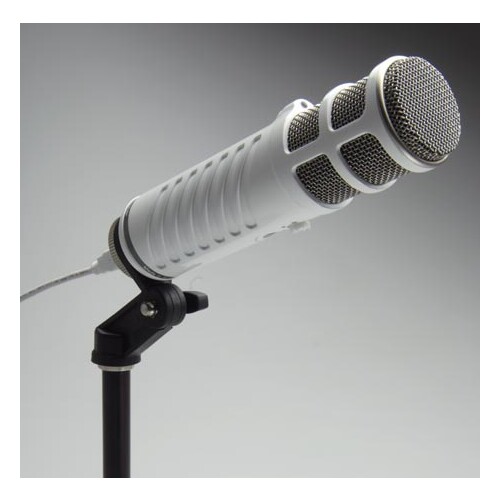

So if anything goes wrong with one file, I have two other backups. This way, I get three high-quality redundant files, with three different versions of the Skype call. Which is where I take over.Īnd after the call is recorded, each person sends me their audio files for editing. Once Step 1 is finished, the show moves on to Step 2. It’s a cool workflow because even though the hosts aren’t in the same room, we can still capture the chemistry of their relationships and their conversations by recording it live. We use that for Perpetual Traffic because Molly and Ralph are almost never in the same physical location for the podcast. If your show consists of just you talking, for example, then you won’t need to get Skype or a call recorder involved. Now, this process will look different for different podcasts. Here’s what the podcast flow looks like for the Perpetual Traffic podcast:
#Rode podcaster pro skype call how to
( RELATED: How to Launch a Podcast, Drive it to the Top of the Charts, AND Keep it There in Just 4 Steps)Īnd generally speaking, there are two main steps involved: The Podcast Production Processīefore we dive into the podcast equipment itself, I think it will be helpful to cover what the typical podcast production process looks like. The equipment is here to serve your needs-not the other way around-so make sure to get what will work for YOU. This is important to realize because the equipment you choose for your studio should depend on the type of podcast you’re producing, as well as other factors like your budget and your recording environment. Part of the reason why? Because there are many different types of podcasts out there: T he equipment you choose for your studio should depend on the type of podcast you’re producing.

The answer is going to vary from podcast to podcast. What is going to do the best job of capturing my content and the chemistry of my host(s) and/or guest(s)?Īnd the truth is that there’s no one right answer to that question. When creating a podcast studio, there’s one big question you need to think about: I’ll help you find tools that fit your needs and your budget, so you can rest assured you’re using the right equipment for what you’re actually doing. It doesn’t matter if you’re setting up a professional-level studio or getting started on a shoestring budget. You’re going to learn exactly what pieces of podcast equipment you need to record your own high-quality podcast.

I’ve also used a lot of different audio equipment over the years-some of it really good, some of it not so good.Īnd in this article, you’re going to get the benefit of my experience. So needless to say, I’ve got quite a bit of experience in podcasting. If you don’t know me, I’m the guy behind the scenes who does all the editing for the Perpetual Traffic podcast. It’s my hope that this post will solve both of those problems. Because the downside to #2 is that you could buy the wrong thing-maybe you get a microphone that doesn’t really work for your needs-and you end up either wasting money, producing low-quality audio, or both. The downside to #1 is that you waste too much time researching when you should be taking action-actually recording your show and putting it out there in the world.īut you don’t want to go too far in the other direction.



 0 kommentar(er)
0 kommentar(er)
